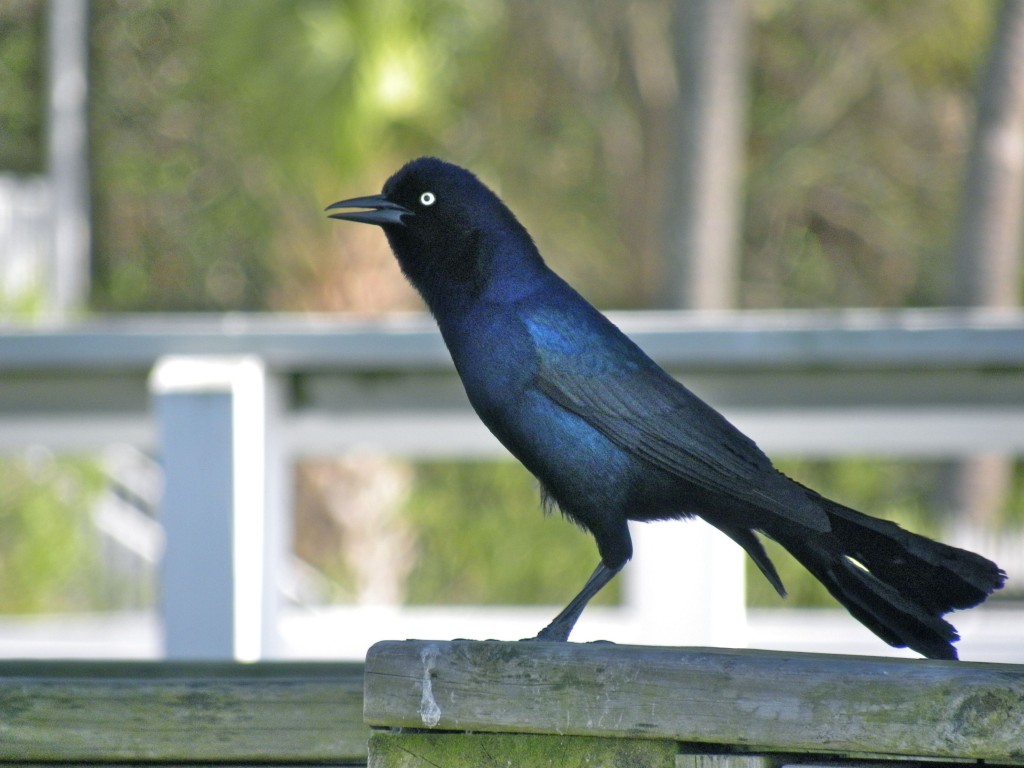June 30 2012. This was a stay at home day but I noted a turn in the seasons this evening. As we sat outdoors enjoying a late meal a flight ten or twelve Common Grackles passed overhead. Not an especially noteworthy species, except in early March when they’re one of our heralds of spring, but they caught my attention because they were in a flock.
For three quarters of the year Common Grackles, Red-winged Blackbirds and other ‘blackbirds’ are gregarious creatures, moving in large flocks foraging over open fields and marshes. It’s only in the spring that they pair up and stake out their own defined breeding territory, but once that duty is complete they congregate again.
It’s high summer for us and among most of our breeding birds things are changing. Except for a few species (such as American Goldfinch and Cedar Waxwings, who nest purposefully later, timing their breeding cycle to the abundance of late summer’s berry and seed crops,) most young birds are out of the nest, effectively fully-fledged and capable of feeding themselves. The kids are grown and the good life begins, they have three months to think about where to spend the winter.
Late one summer evening several decades ago, a small group of us were camping on the shore of a northern wilderness lake and in the stillness of early evening a long linear flight of hundreds, maybe thousands, of Common Grackles passed overhead heading purposefully southward. There was constant low level of chatter between individual birds keeping the everyone informed with the latest celebrity gossip, but what greatly amused us was the small rainstorm of bird droppings that mirrored their route across the lake.
